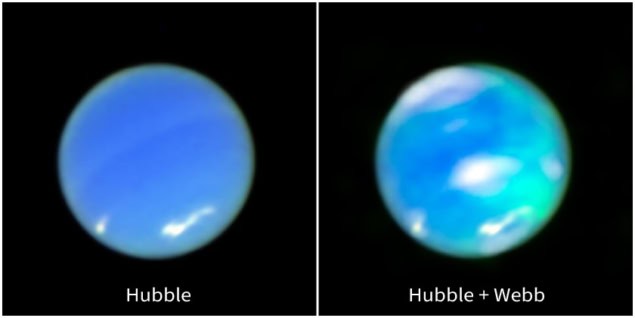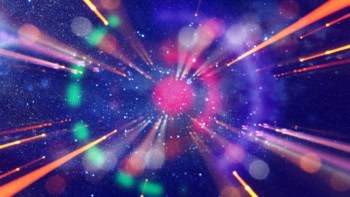
The first direct evidence for auroras on Neptune has been spotted by the James Webb Space Telescope (JWST) and the Hubble Space Telescope.
Auroras happen when energetic particles from the Sun become trapped in a planet’s magnetic field and eventually strike the upper atmosphere with the energy released creating a signature glow.
Auroral activity has previously been seen on Jupiter, Saturn and Uranus but not on Neptune despite hints in a flyby of the planet by NASA’s Voyager 2 in 1989.
“Imaging the auroral activity on Neptune was only possible with [the JWST’s] near-infrared sensitivity,” notes Henrik Melin from Northumbria University. “It was so stunning to not just see the auroras, but the detail and clarity of the signature really shocked me.”
The data was taken by JWST’s Near-Infrared Spectrograph as well as Hubble’s Wide Field Camera 3. The cyan on the image above represent auroral activity and is shown together with white clouds on a multi-hued blue orb that is Neptune.
While auroras on Earth occur at the poles, on Neptune they happen elsewhere. This is due to the nature of Neptune’s magnetic field, which is tilted by 47 degrees from the planet’s rotational axis.
As well as the visible imagery, the JWST also detected an emission line from trihydrogen cation (H3+), which can be created in auroras.



